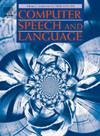AIPO: Automatic Instruction Prompt Optimization by model itself with “Gradient Ascent”
IF 3.4
3区 计算机科学
Q2 COMPUTER SCIENCE, ARTIFICIAL INTELLIGENCE
引用次数: 0
Abstract
Large language models (LLMs) can perform a variety of tasks such as summarization, translation, and question answering by generating answers with user input prompt. The text that is used as input to the model, including instruction, is called input prompt. There are two types of input prompt: zero-shot prompting provides a question with no examples, on the other hand, few-shot prompting provides a question with multiple examples. The way the input prompt is set can have a big impact on the accuracy of the model generation. The relevant research is called prompt engineering. Prompt engineering, especially prompt optimization is used to find the optimal prompts optimized for each model and task. Manually written prompts could be optimal prompts, but it is time-consuming and expensive. Therefore, research is being conducted on automatically generating prompts that are as effective as human-crafted ones for each task. We propose Automatic Instruction Prompt Optimization (AIPO), which allows the model to generate an initial prompt directly through instruction induction when given a task in a zero-shot setting and then improve the initial prompt to optimal prompt for model based on the “gradient ascent” algorithm. With the final prompt generated by AIPO, we achieve more accurate generation than manual prompt on benchmark datasets regardless of the output format.
AIPO:基于“梯度上升”的模型自动指令提示优化
大型语言模型(llm)可以通过生成带有用户输入提示的答案来执行各种任务,例如摘要、翻译和问题回答。用于模型输入的文本(包括指令)称为输入提示符。有两种类型的输入提示:zero-shot提示提供一个没有示例的问题,另一方面,few-shot提示提供一个有多个示例的问题。设置输入提示符的方式对模型生成的准确性有很大的影响。相关的研究被称为提示工程。提示工程,特别是提示优化,用于找到针对每个模型和任务优化的最佳提示。手动编写提示可能是最佳提示,但它既耗时又昂贵。因此,研究人员正在进行自动生成提示的研究,这些提示与人工制作的提示一样有效。我们提出了自动指令提示优化(AIPO),它允许模型在零射击设置下直接通过指令归纳生成初始提示,然后基于“梯度上升”算法将初始提示改进为模型的最优提示。使用AIPO生成的最终提示符,无论输出格式如何,我们都可以在基准数据集上实现比手动提示符更准确的生成。
本文章由计算机程序翻译,如有差异,请以英文原文为准。
求助全文
约1分钟内获得全文
求助全文
来源期刊

Computer Speech and Language
工程技术-计算机:人工智能
CiteScore
11.30
自引率
4.70%
发文量
80
审稿时长
22.9 weeks
期刊介绍:
Computer Speech & Language publishes reports of original research related to the recognition, understanding, production, coding and mining of speech and language.
The speech and language sciences have a long history, but it is only relatively recently that large-scale implementation of and experimentation with complex models of speech and language processing has become feasible. Such research is often carried out somewhat separately by practitioners of artificial intelligence, computer science, electronic engineering, information retrieval, linguistics, phonetics, or psychology.
 求助内容:
求助内容: 应助结果提醒方式:
应助结果提醒方式:


